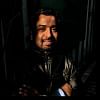
Shamsuddoza Sajen
Shamsuddoza Sajen is a journalist and researcher. He can be contacted at [email protected]
Shamsuddoza Sajen is a journalist and researcher. He can be contacted at [email protected]
On July 14, 2024, tensions flared as hundreds of students poured out of their DU dormitories to protest a “disparaging comment” made by then–prime minister Sheikh Hasina regarding quotas in government jobs.
On July 13, 2024, the Students Against Discrimination announced a fresh set of protest programmes, shifting their strategy from blockades to processions and symbolic marches.
Despite the weekly holiday, anti-quota protesters once again blocked the Shahbagh intersection in Dhaka, demanding reforms to the quota system in government jobs and condemning the police action on students the previous day.
On July 11, 2024, the anti-quota movement entered a new phase of confrontation. Ignoring police warnings and ministers’ calls to step back, thousands of protesters defied barricades and took to the streets as part of their “Bangla Blockade.”
July 10, 2024.Protesters refuse to back down.Shamsuddoza Sajen.The protests over the quota system in government jobs showed no signs of slowing down on July 10 as students across the country vowed to continue their movement despite the Supreme Court’s order for a four-week stat
The ongoing Bangla Blockade paused for a day as students leading the quota reform movement prepared for their next round of protests.
For the second consecutive day, the Bangla Blockade grips the capital, with thousands of students and jobseekers bringing traffic to a standstill at key intersections across Dhaka.
Beyond Dhaka, protesters hold the streets with equal resolve
At 4:00am on March 30, 1971, Bangladeshi forces, comprising East Pakistan Rifles (EPR), police and civilians under the leadership of Abu Osman Chowdhury,
In the evening, Bangabandhu Sheikh Mujibur Rahman was flown via helicopter from the cantonment, where he was detained, to the Tejgaon Airport. Afterwards, he was flown to Karachi by a special military aircraft.
In Dampara Police Lines, Chittagong, Bangalee police personnel put up a brave resistance. But they could not hold on for long as they were not trained in the art of warfare. They suffered heavy casualties and abandoned their post when they were about to be overrun by the Pakistan army.
As Bangabandhu Sheikh Mujibur Rahman declared the independence of Bangladesh, resistance began in Chattogram city and many other areas. Intense fighting broke out between the Pakistan military and the freedom fighters.
Just before his arrest, Bangabandhu Sheikh Mujibur Rahman sent a message declaring the independence of Bangladesh. This message was broadcast from Swadhin Bangla Betar Kendro on 26 March, 1971, and was widely reported in newspapers around the world.
Bangabandhu Sheikh Mujibur Rahman in a press statement issued today called for a general strike throughout Bangladesh on March 27 against the army’s action in certain places in East Pakistan including Saidpur, Rangpur and Joydebpur.
There was a final meeting between Awami League’s team and President Yahya Khan’s advisers on March 24 at 6:00pm. The reading of all the clauses and schedules of the draft proclamation, initially prepared by Yahya’s advisers and subsequently modified by AL representatives, was concluded.
The representatives of President Yahya Khan and an Awami League team met twice today. The AL team arrived at the President’s House flying the Bangladesh flag -- a sight which clearly disturbed the junta. However, an agreement on the implementation of the principles embodied in the Six Points was ultimately achieved.
On the morning of March 22, 1971, Bangabandhu Sheikh Mujibur Rahman called on President Yahya Khan. Zulfikar Ali Bhutto was also present at the meeting.
In an unscheduled meeting, Yahya today told Mujib and Tajuddin that Bhutto had been informed that the representatives of the Awami League and the government had reached an agreement on the formation of central cabinet and that Bhutto should be present for discussion on the interim constitutional instrument and cabinet formation.